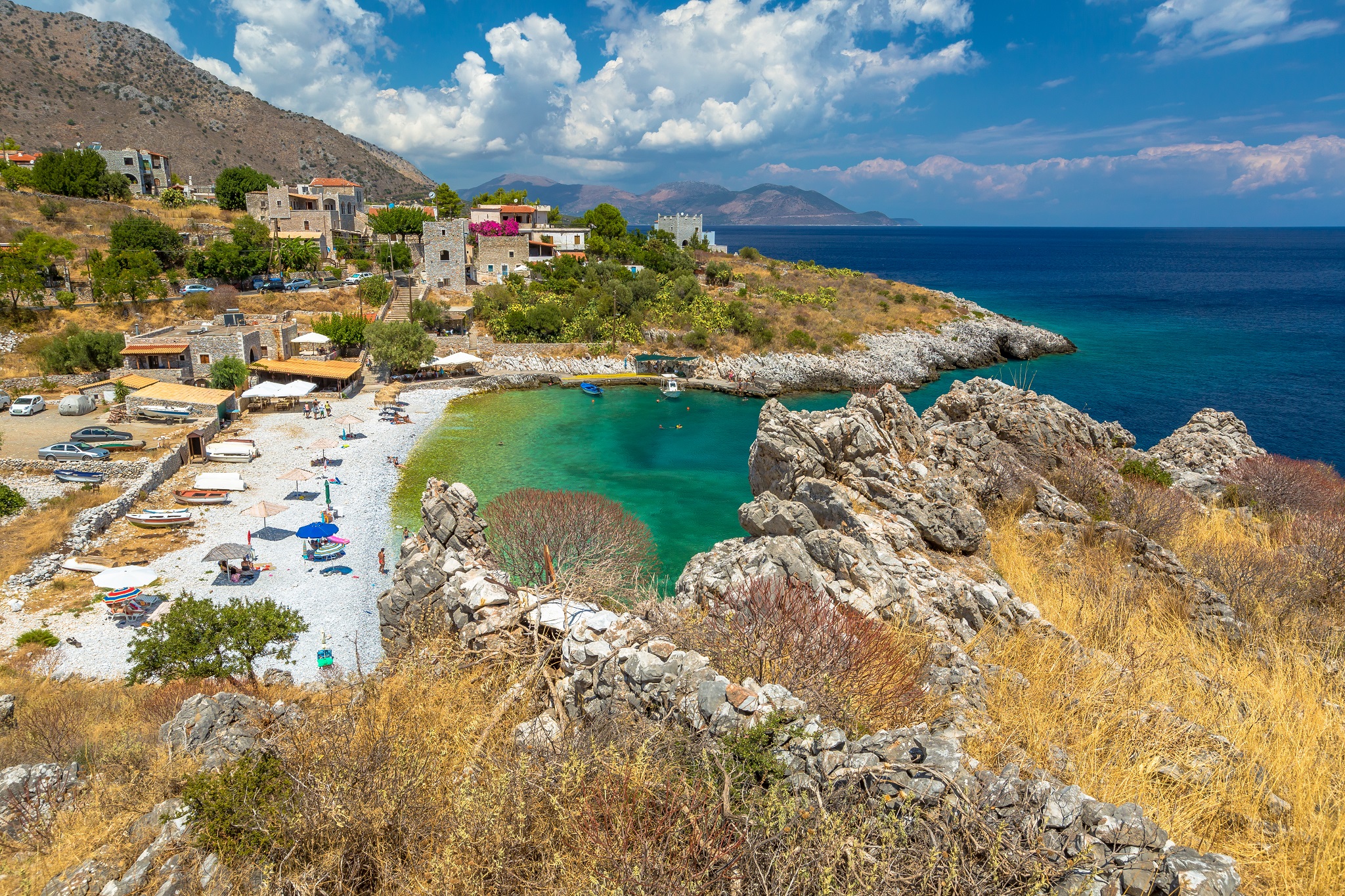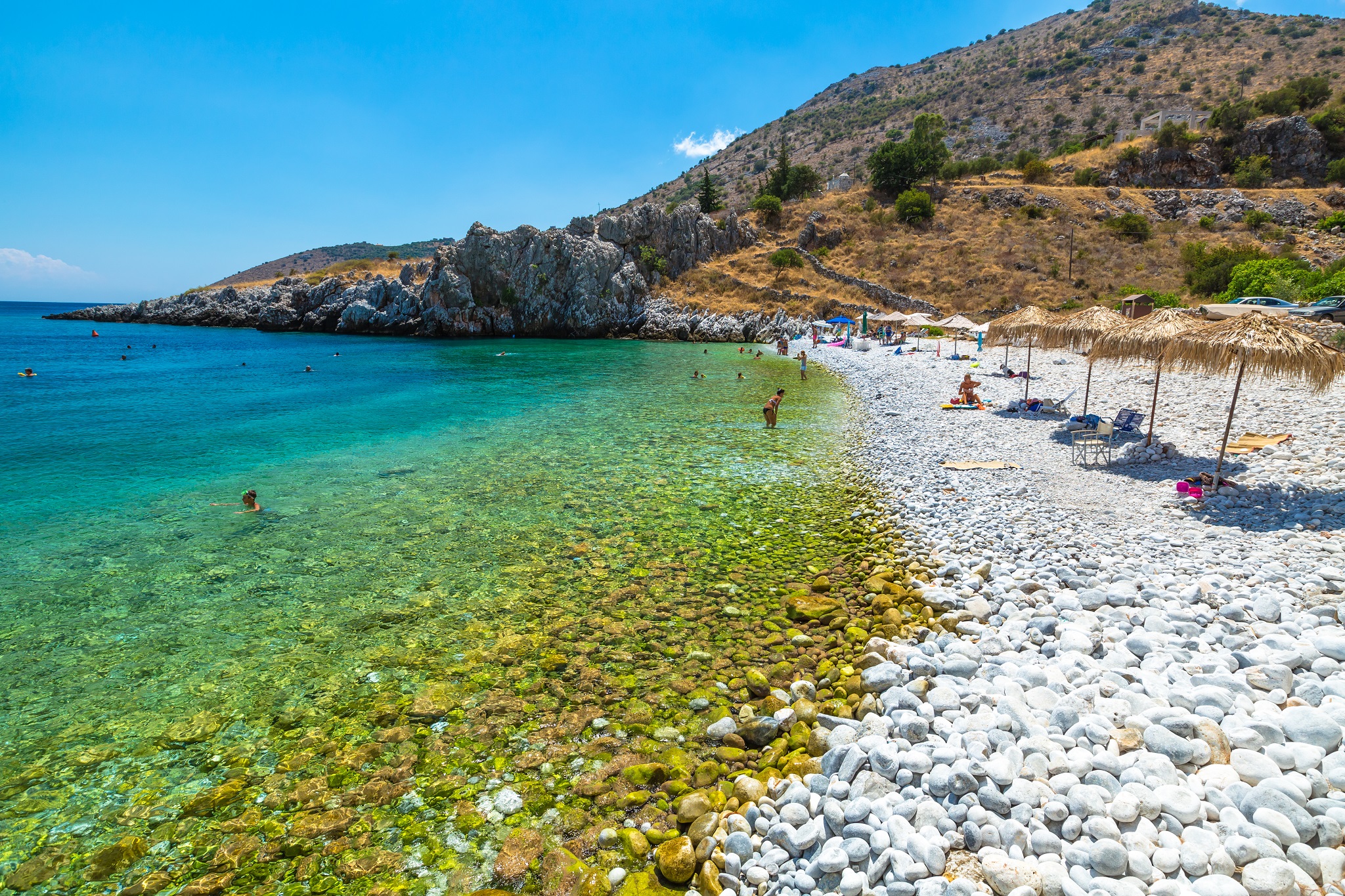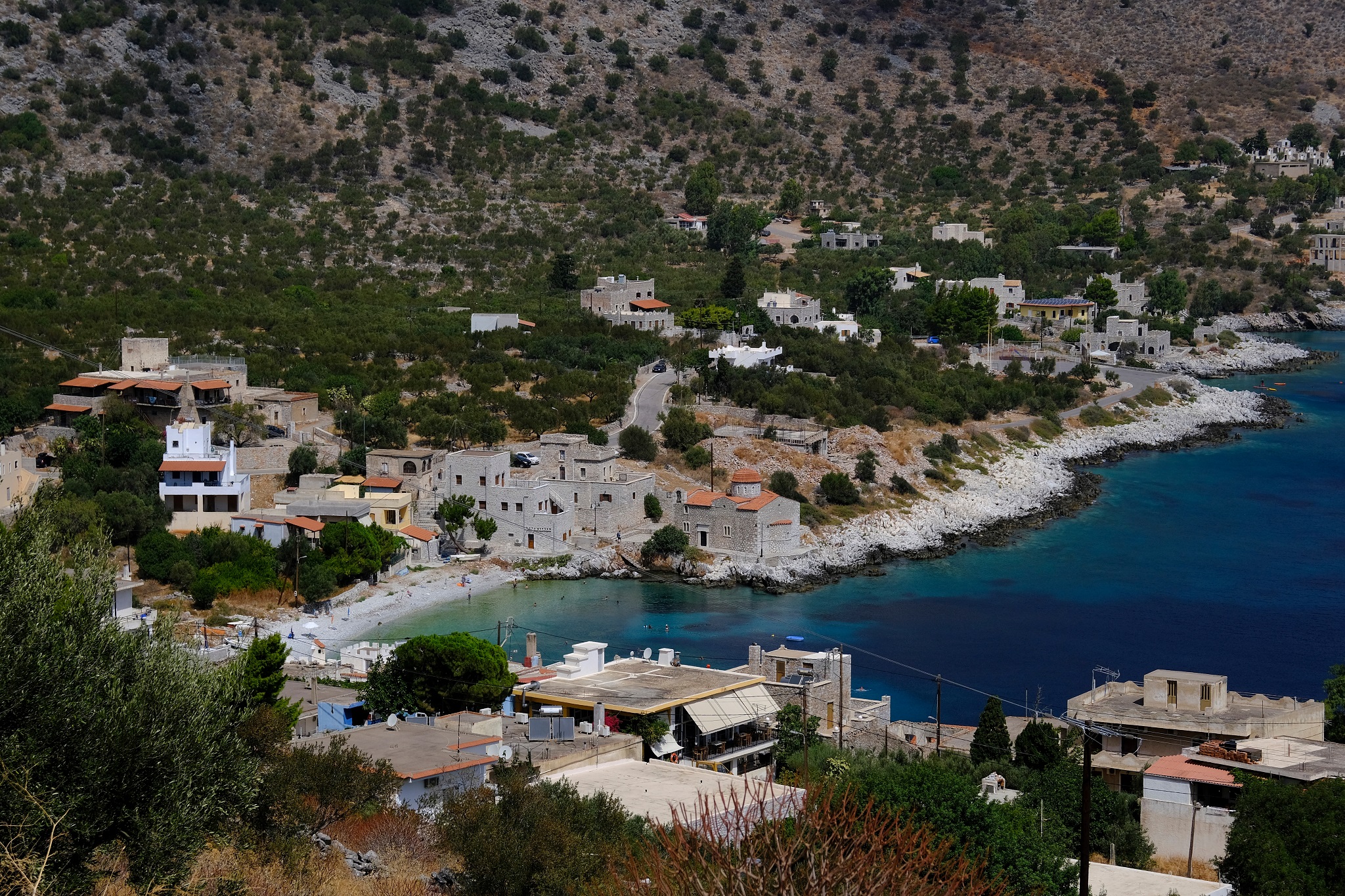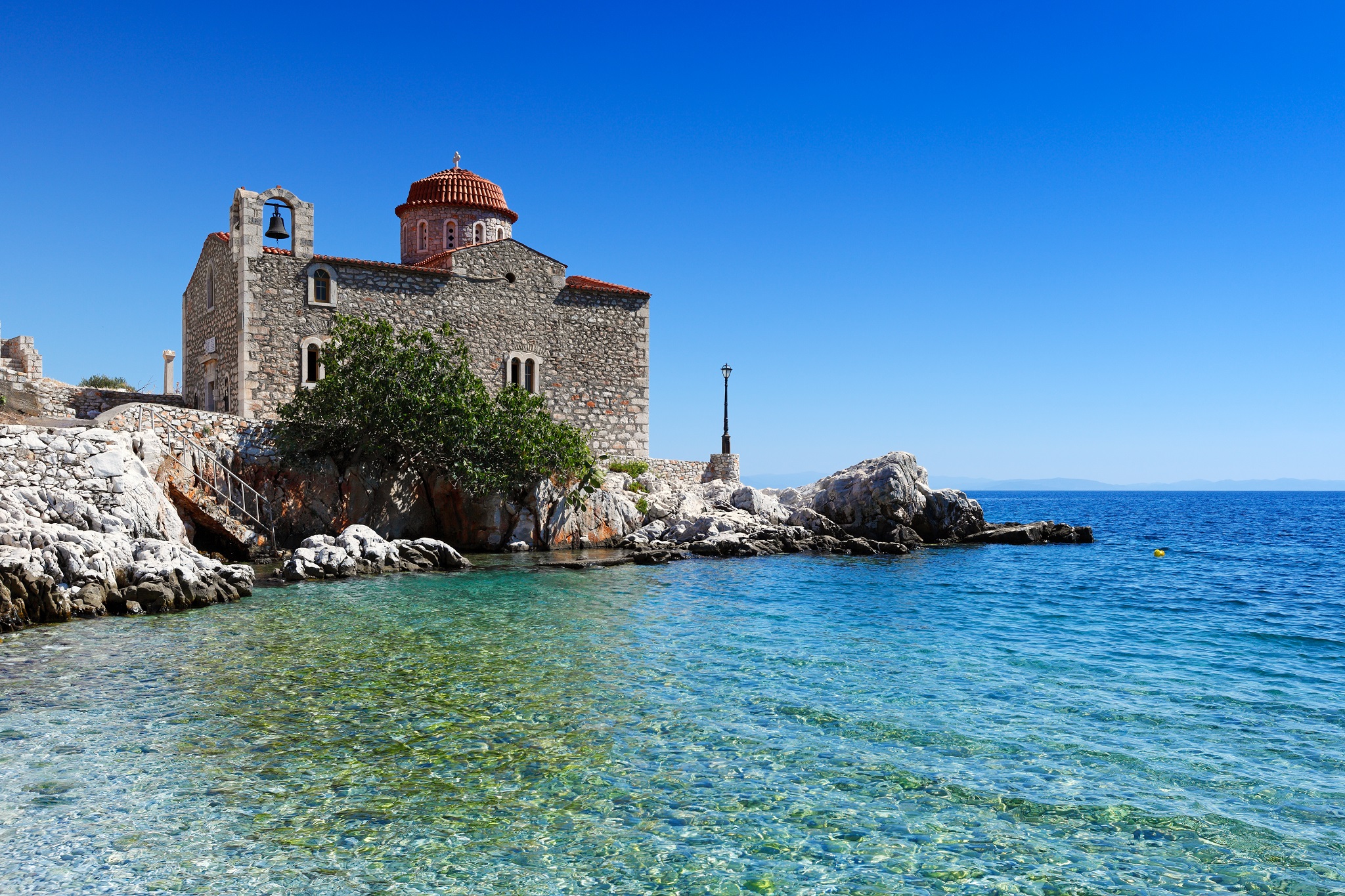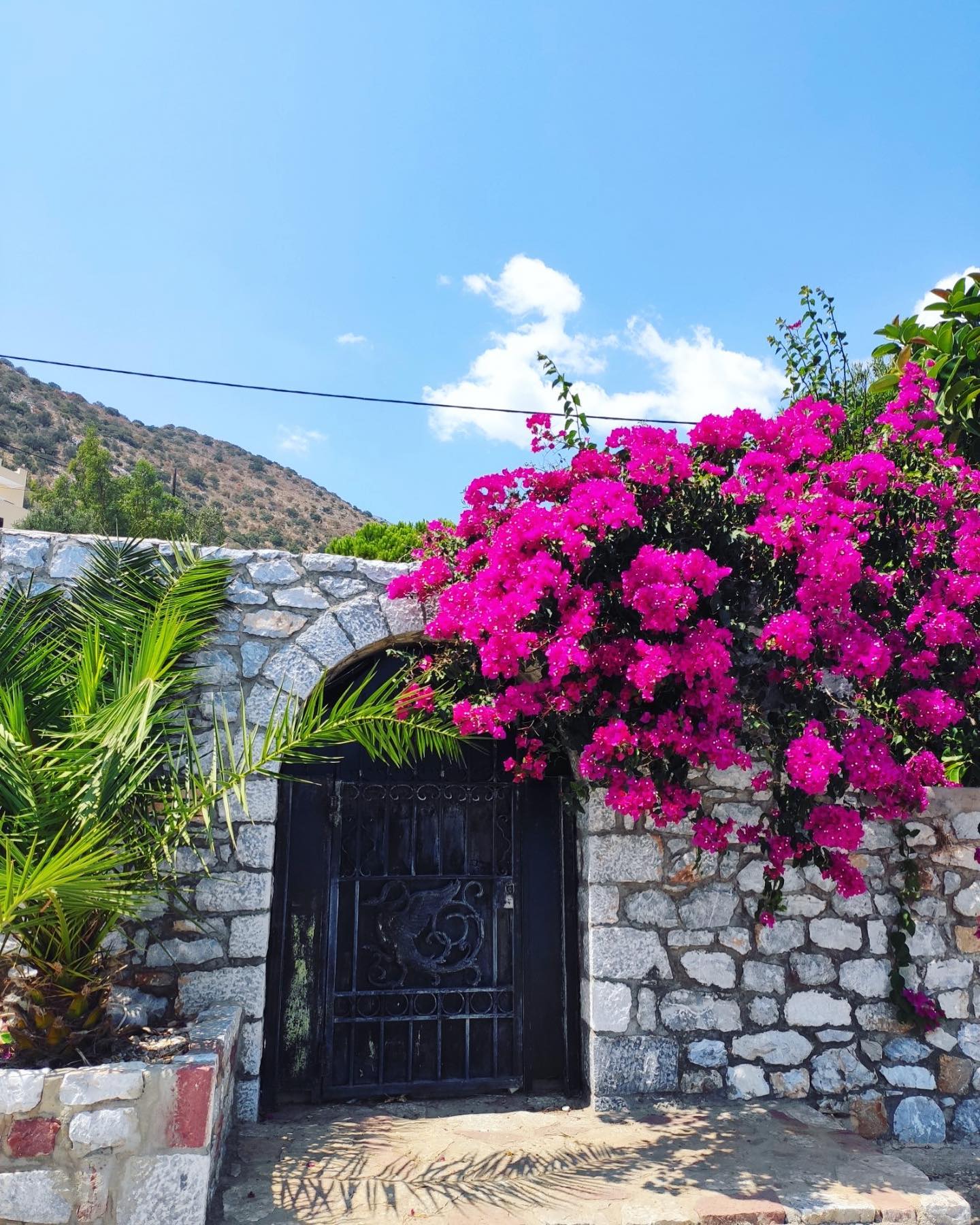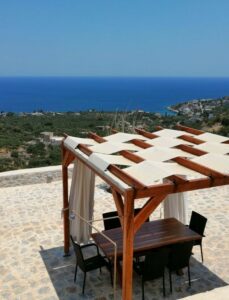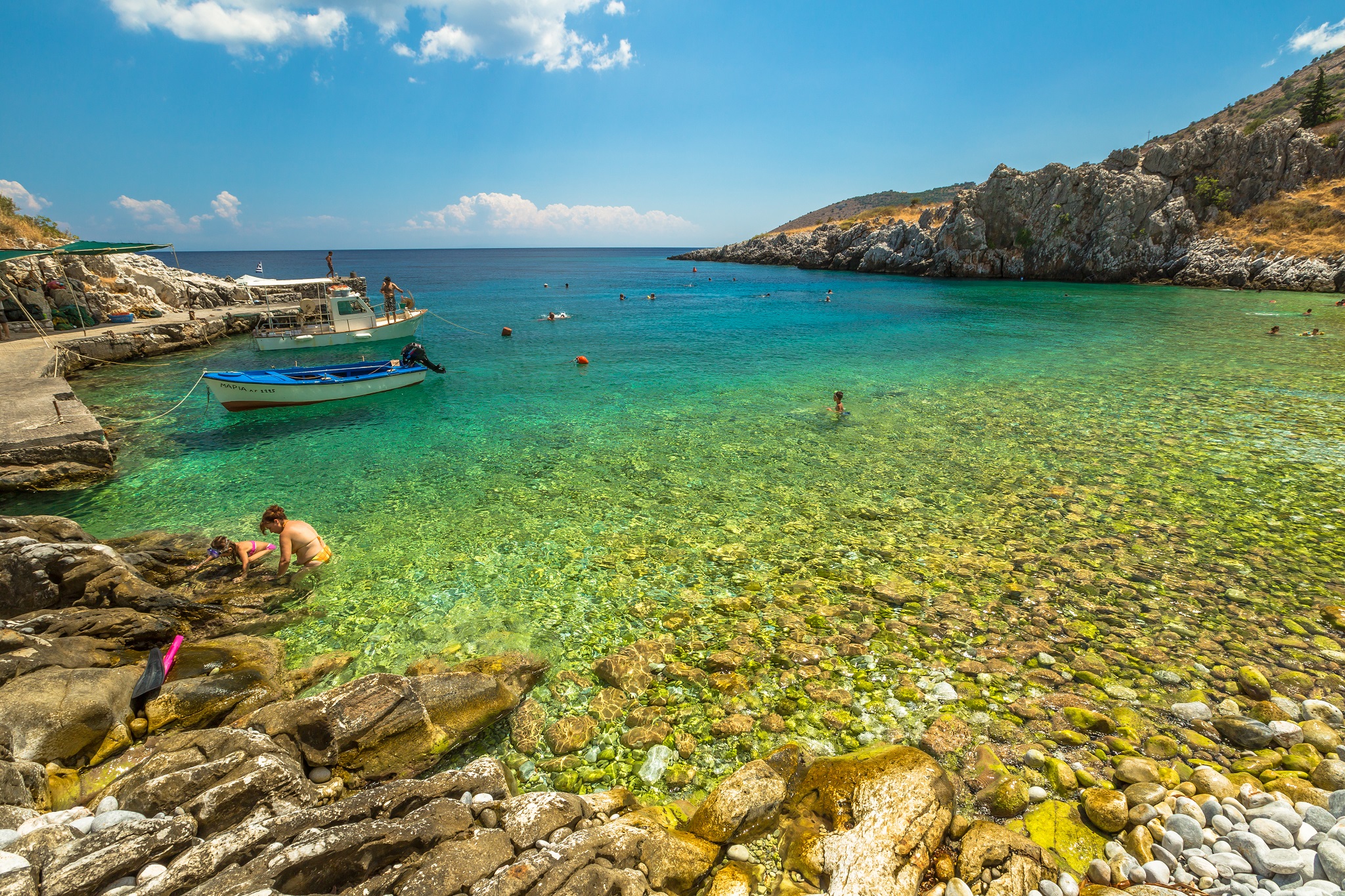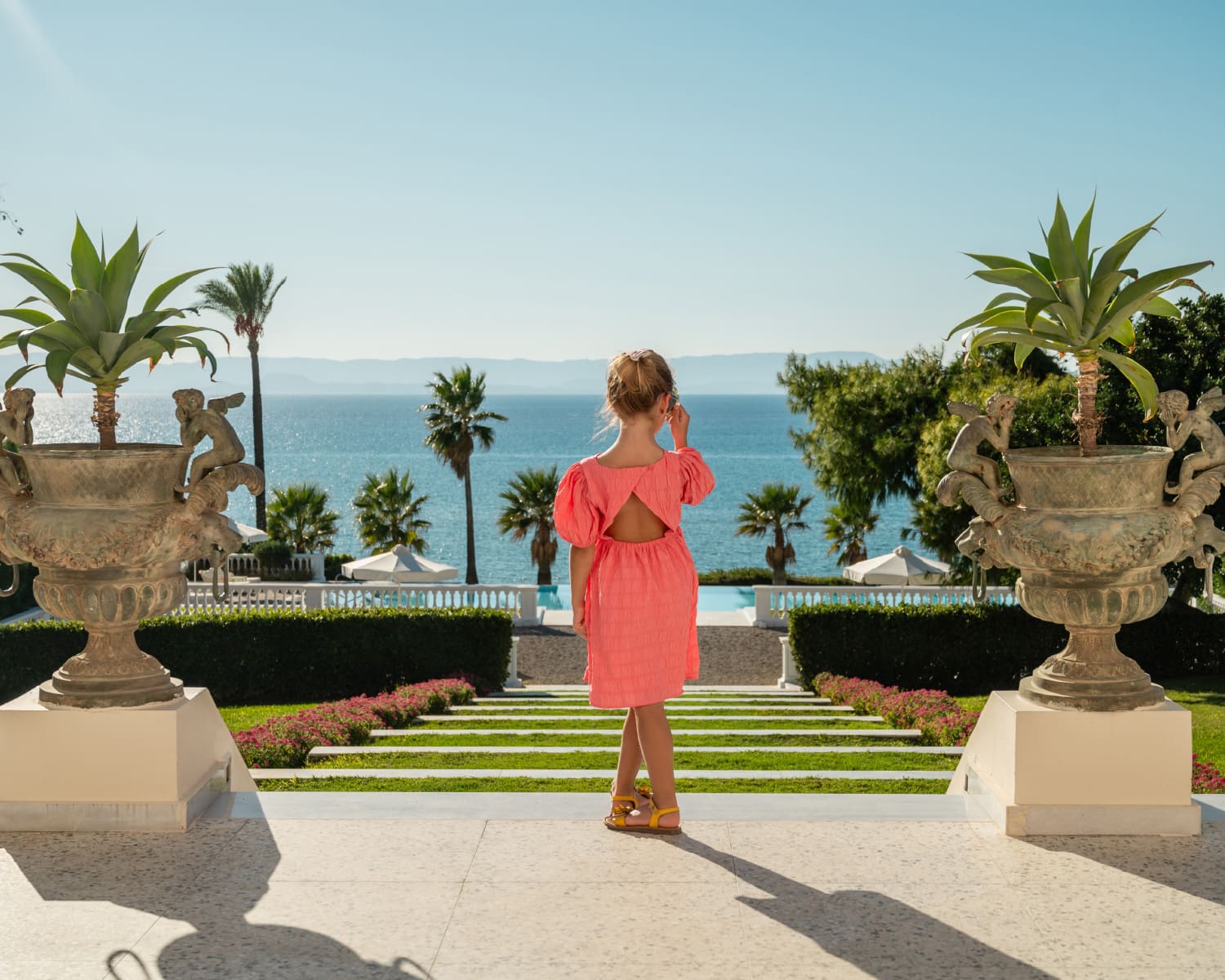Situated in the region of Laconian Mani, Kokkala is a hidden gem spread over a picturesque bay lapped by emerald waters. Relatively undiscovered, the tranquil retreat offers an idyllic setting with beautiful, pebbled beaches.
Located in the southern reaches of the Peloponnesian peninsula, Mani is framed by the Taygetos mountain range and the striking Cape Tainaro, surrounded by a rugged landscape renowned for its raw, untamed beauty.
Historically, the area’s arid soil rendered agriculture difficult, forcing locals to seek livelihoods as pirates or warriors during tumultuous periods or to migrate during economically subdued times. But in the 1980s a shift occurred when the region began to capitalize on its natural allure, turning what locals once took for granted into special tourist attractions.
Improvements in infrastructure were made in the 1990s, particularly to roads and the water supply, which set Mani on a path of regeneration that drew an influx of visitors from Greece and beyond. Nonetheless, despite increased coverage of the area in travel media and the consequent emergence of popular hotspots, many pockets of Mani remain largely undiscovered. Such is the case of Kokkala, where the pristine beaches, such as shallow-watered Marathos with mesmerizing emerald waters, provide an idyllic setting for a tranquil escape from the bustle of everyday life.
One of the lesser-known villages of Laconian Mani, Kokkala is home to 238 residents and stands at 67 meters, overlooking a pretty bay. Due to its coastal location, it has long served as a seafaring hub for the surrounding area. Much like other secluded corners of the historical Mani region, its origins are shrouded in mystery. Its founding date remains unknown, but based on its name, its early inhabitants were certainly Greek-speaking Christians.
Overall, Kokkala is thought to have probably originated in the post-Byzantine era, when the Peloponnese was under Ottoman rule. This assumption is based on the presence of fortress-like residences (towers) that still stand, echoing the traditional, stone-built architecture of Mani, structures that have now been officially declared as historic and preserved monuments.
What has been established as fact is that during the first half of the 20th century, Kokkala emerged as a focal point for the broader region. Its coastal character transformed it into the area’s largest community, attracting residents from the more mountainous villages, such as Kato Pachianika (Agios Nikolaos), which is why the village even had its own elementary school.
Along the coast, you’ll come across the hamlet of Soloteri, which means “hermitage”, a nod to the stone-built church of the Taxiarchs ‘Archangels’ erected by Captain Panagis Kalogerogiannis in 1850 and completed in 1975. Once an independent settlement, it is now considered a ‘neighborhood’ of Kokkala, just 2 kilometers north of the village.
Soloteri’s charm comes especially from its two picturesque pebbled beaches, Marathos and Soloteri; upon reaching either, you’ll immediately be captivated by the unique color variations of the Laconian Gulf’s waters. In the shallows, an emerald hue dominates, but as the sea deepens, the green melds with blue, culminating in a vivid azure that paints the open sea.
When it comes to accommodations, cafes, and restaurants, although Kokkala remains unknown to the wider public, it has not overlooked its tourism infrastructure, and especially in terms of hospitality, although it is not as developed as the villages in other, more famous regions of Mani. The accommodation model of rented houses or rooms, which can be found on digital platforms like Airbnb, dominates. There are also more organized choices, like the well-maintained guesthouse “Ktima Zacharias” (697 403 2642), which has fully equipped rooms and a garden, just 800 meters from the beach. Outside the village, the “Soloterra” guesthouse (694 799 6059) is situated in a renovated traditional Mani tower from the 19th century, with a fantastic view of the coast and the Laconian Gulf.
Similar to many small seaside locations in Greece, you’ll find two taverns in Kokkala where you can sit for coffee or a meal. Both at Polytimi’s taverna (27330-21570) and at “Marathos” (27330-21118), you be able to enjoy freshly caught fish and seafood, tasty meze options and well-prepared Greek and Mediterranean cuisine.
To reach Kokkala you can take a scenic drive either from Sparta or Kalamata. At 79 kilometers away, Sparta is the closer option, approximately 1.5 hours away. From Sparta, the route to Kokkala is straightforward. After reaching Gythio, you’ll head towards the peninsula of Cotrona and its seaside village, before descending south and arriving at Kokkala, shortly after passing through Flomochori. The trip from Kalamata is slightly longer, about 2.5 hours, and 139 kilometers away.
Read also:
Avgo Monastery: Inspiring Awe and Reverence
Agra: The Pella Lake that evolved into one of Greece’s Most Beautiful Wetlands



